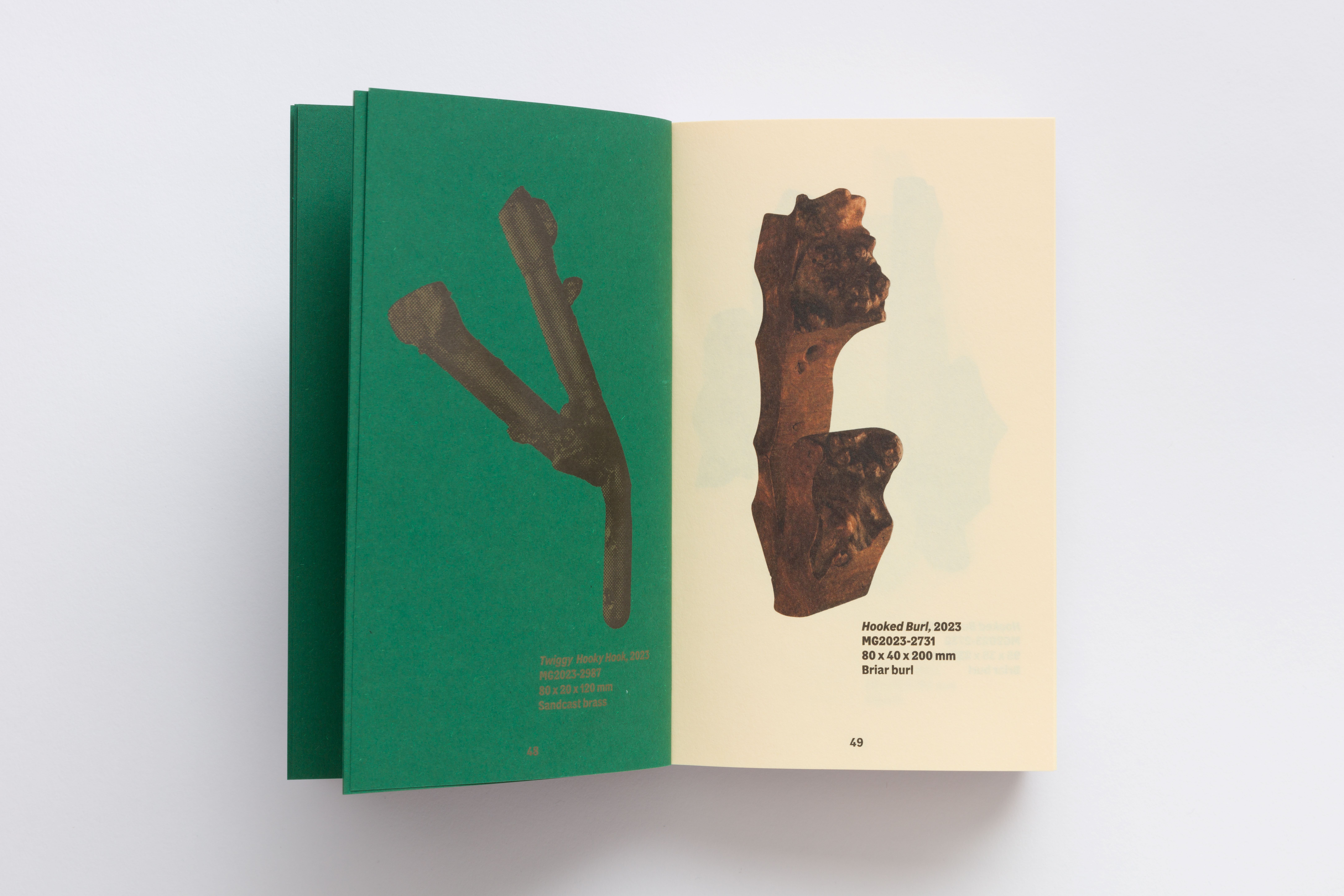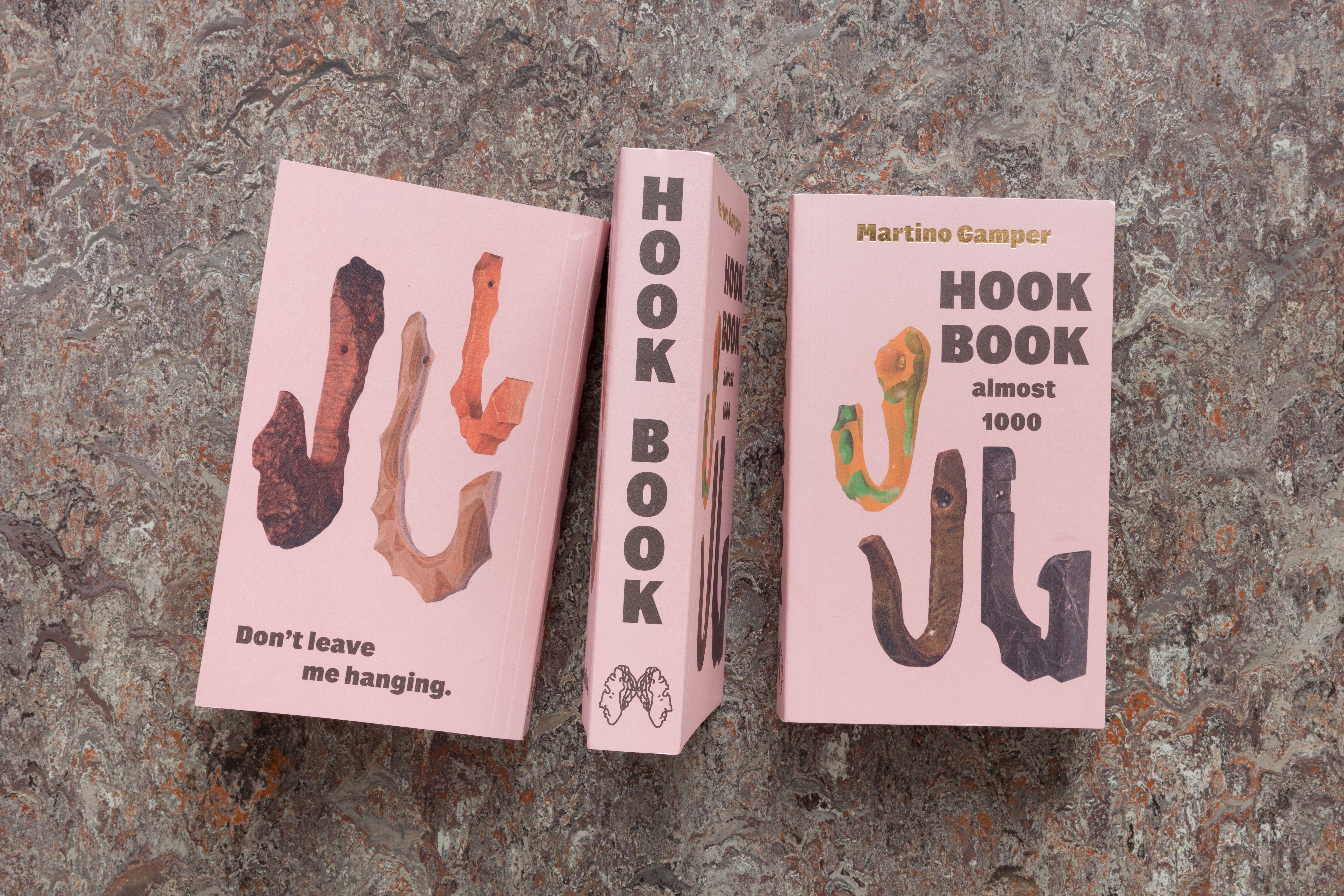
You could never accuse designer and artist Martino Gamper of being idle. Audacious? Yes. Precious? No. Few individuals have put such a volume and variety of work into the world with their bare hands. His curiosity to experiment through doing is impressive, voracious, perhaps even concerning. How restless is that mind? How raw are those fingers? While a comprehensive retrospective of Gamper’s projects is opening in London in October 2024, a new pearlescent pink book from his publishing house Dente-de-Leone has landed with a thud in time for summer.
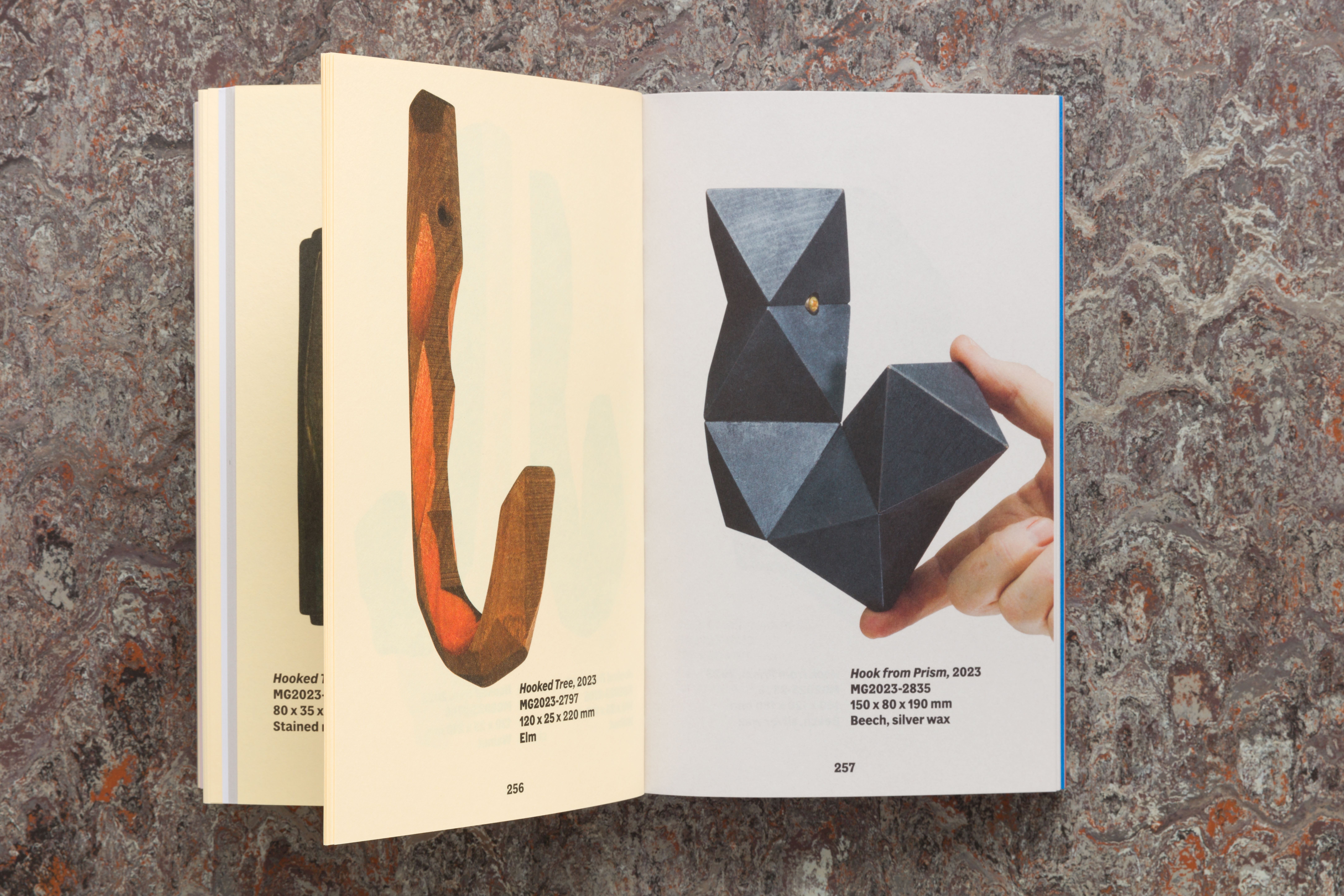
Hook Book – almost 1000 catalogues the indefatigable Italian’s recent focus on – well, the clue is in the title. It is a beautiful object in itself, designed by Åbäke and bearing all the hallmarks of the design studio’s playful sophistication. In a glorious panoply of papers and printing techniques, Gamper’s thousand-odd (and sometimes they are odd) hooks are laid bare. The sheer range is mind-boggling in itself. Each hook is a minor feat; together, the collection presents as a taxonomy of materials and processes – a single archetype extrapolated into smithereens.
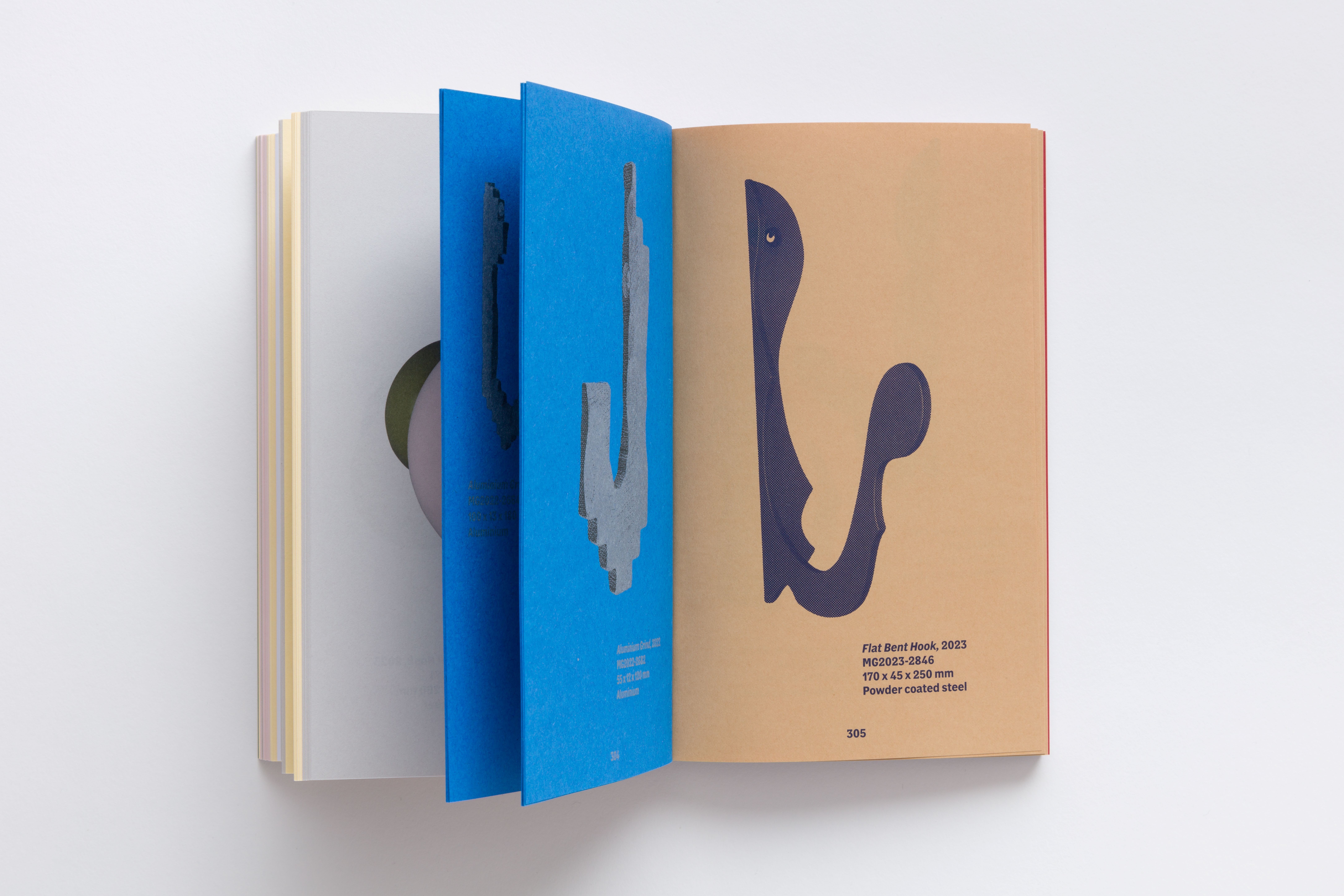
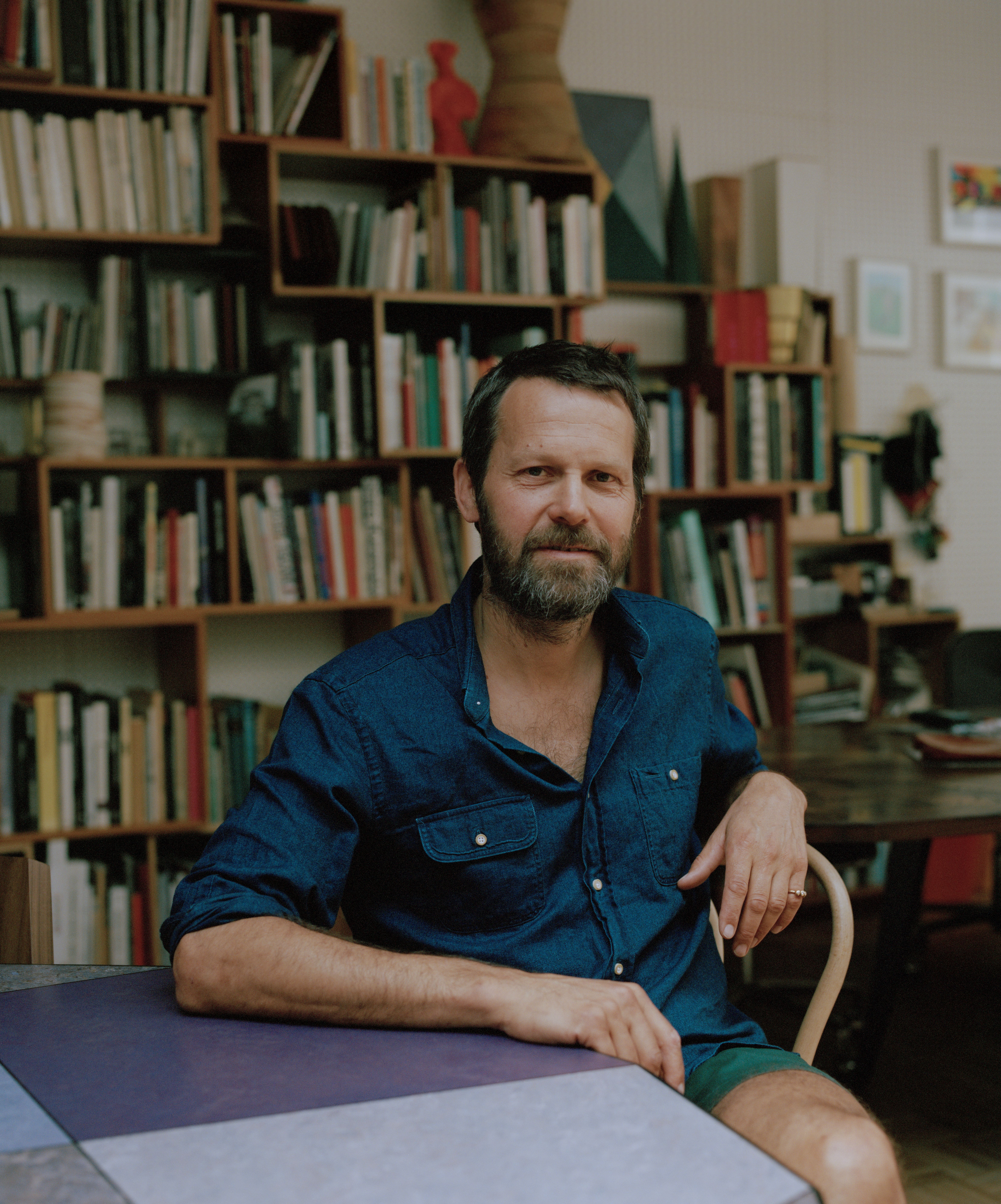
Gamper got properly hooked on hooks in New Zealand, where he tends to spend winter. An early collection of hooks was exhibited as ‘Hookaloti’ – a show in 2019 at Michael Lett in Auckland. A second show, in 2023 at Anton Kern in New York, gave Gamper the impetus to rapidly expand his hook library. That show had the beautiful title ‘I Am Many Moods’, courtesy of Gamper’s friend, the author Deborah Levy, who also penned a quietly profound text for Hook Book, titled: ‘Attachment Theory; holding and letting go’.
Gamper’s world is compelling. So when Hook Book arrived, we picked up the phone to find out more…
Why Martino Gamper is hooked on hooks
Wallpaper*: You are rigorous Martino!
Martino Gamper: The hooks were the easy part. Photographing and cataloguing everything for the book was far more laborious.
W*: The appeal of a hook is perhaps obvious, but I’m curious to hear what you like about them.
MG: I have always liked hanging things on hooks. I like to keep things off the floor. In 2011 I did a live-in residency show at Galleria Franco Noero in Turin. I moved in with nothing but a daybed and made all the furniture over the course of a month from my imagination. I really missed having anywhere to keep things – to hang things. Hooks.
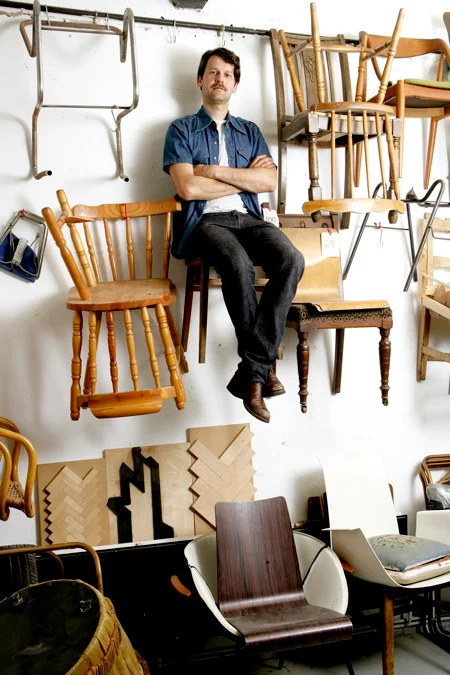
Wallpaper*: I remember visiting you in 2007 in the early days of your ‘100 Chairs in 100 Days’ project, and even then most of your studio was hung on the walls on pegs and hooks and various mechanisms.
MG: That’s right. Hooks are simple objects but also ambiguous. They are sculptural, decorative and functional simultaneously. That’s quite a rare combination. They hold interesting space around them.
W*: Tell us about the material variety.
MG: It was a good excuse to play with different materials that I don’t know. I always like to push the limits of my knowledge and experience, but you have to have a good enough reason to use a new material. A hook is a fairly simple experiment in this case: make a 90-degree bend (or thereabouts) in anything and it can become a hook. Also it is a three-dimensional object, not a flat surface. All it has to do is hopefully be strong enough to hold something up.
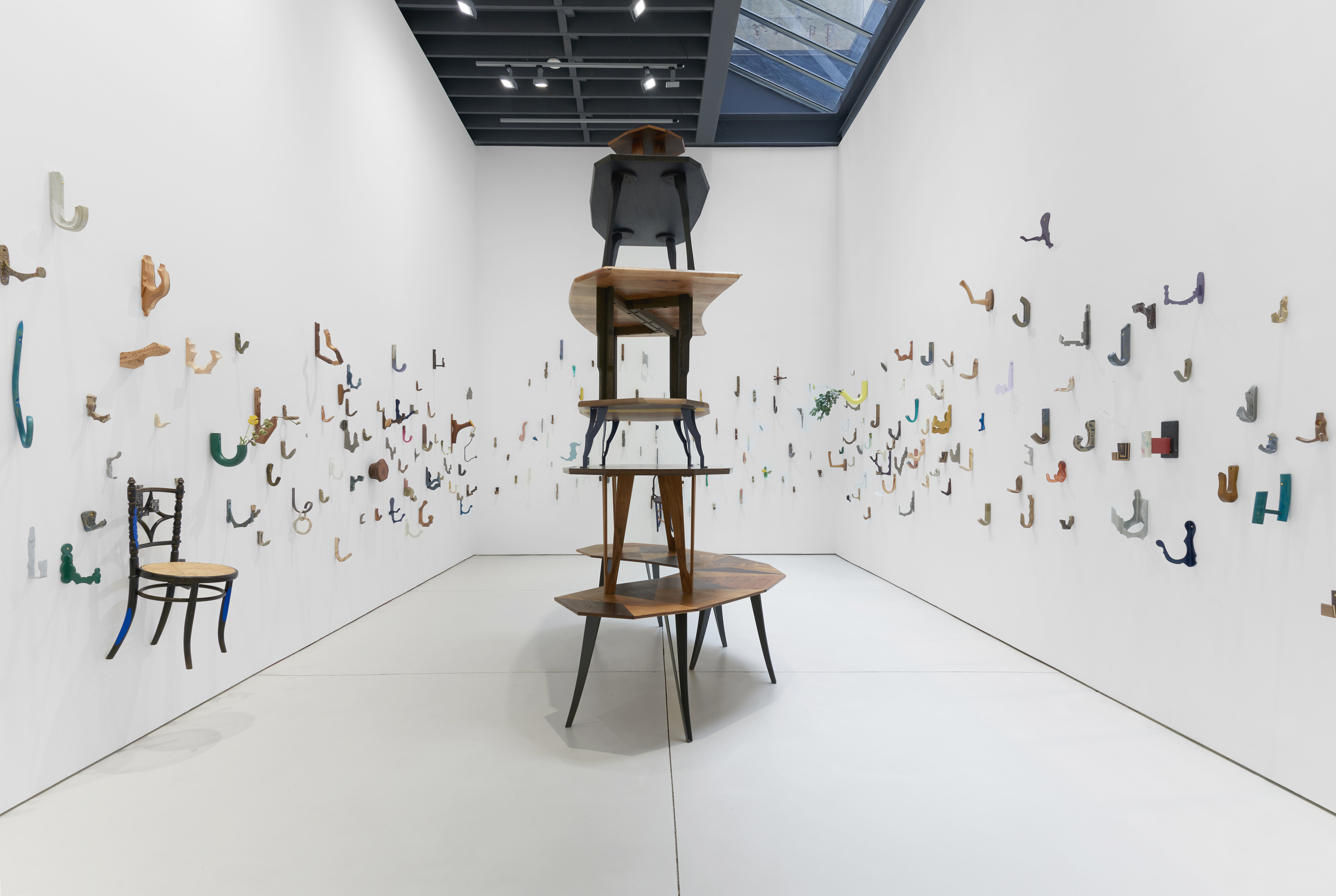
W*: How do you feel when you see them in such a large volume, as at Anton Kern in New York?
MG: It was quite an overwhelming installation. I thought I had a concept but an empty white cube is a difficult challenge. I asked the team to close their eyes and take a marker and start plotting. We then drilled holes and installed, with a few tweaks. In retrospect it was almost too much – it can sometimes be hard to see the wood for the trees.
W*: You talk about relying on intuition in your practice and process. Please expand.
MG: I like to do first and think second. I need to get my hands into my projects and then work out what’s happened. You can overthink things in advance, but I find it makes more sense for me to post-rationalise than pre-determine. There’s too much complexity in life already. Keep things simple!
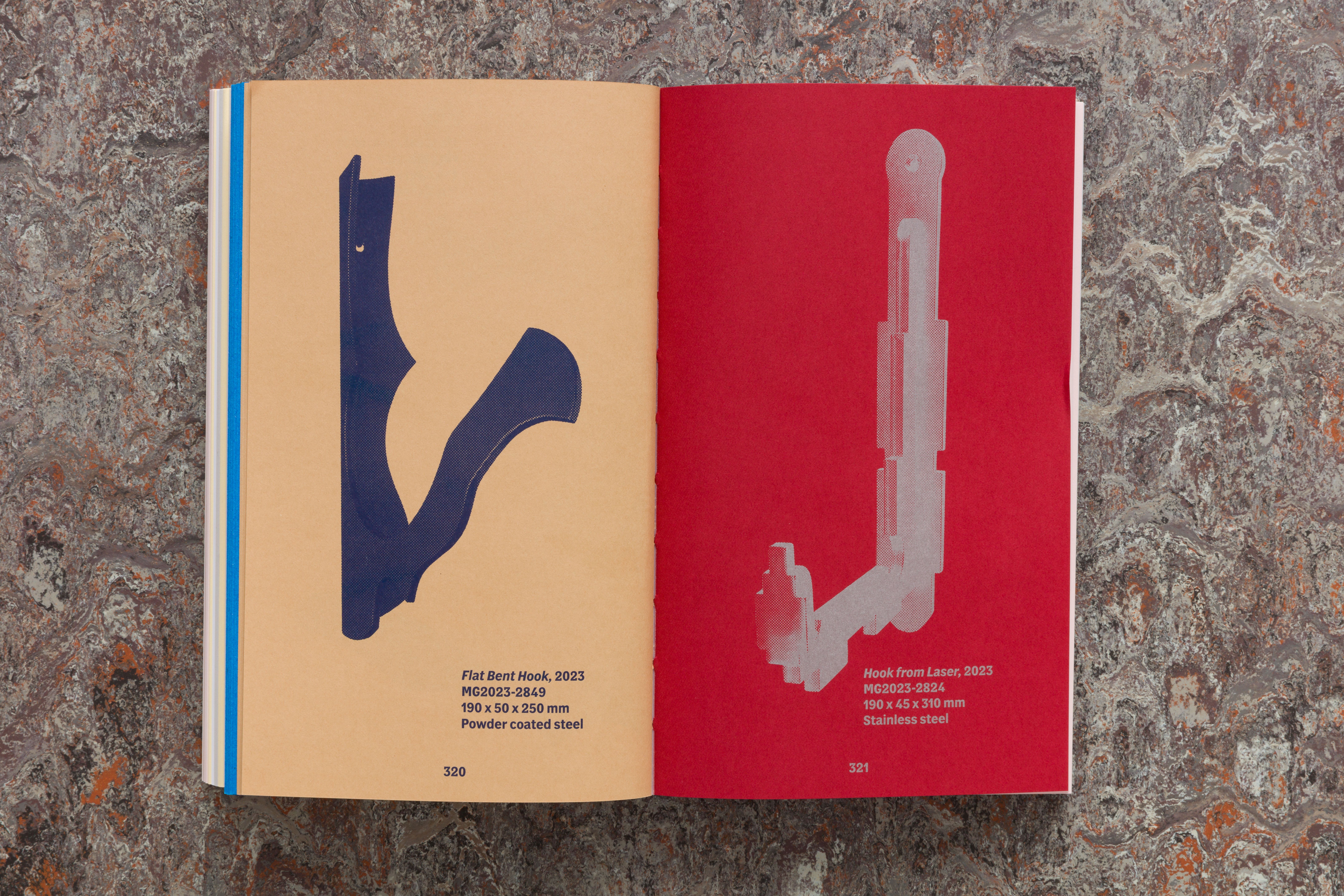
W*: Is there a material that surprised you?
MG: Cork is strangely difficult to work with. It’s very soft. You can’t really sculpt it, only sand it. You can’t really paint it either, it doesn’t easily take on colour or dye. Clay on the other hand I loved learning about. I made hooks in several excellent potteries in New Zealand. It’s a remarkable material. If you don’t get things right first time, even if you’ve fired it, you can grind it back down and start again. It has infinite possibility.
W*: Your books are fast becoming collectible objects too. How important is the book as part of your process and perhaps also your legacy?
MG: I’ve always loved books being part of my projects. Even at the Royal College of Art I made a book with Kajsa [Ståhl, from Åbäke] about corners. Photographing and documenting is a powerful way of communicating. I really believe in books and I believe they endure as physical objects. My book for ‘100 Chairs’ is handy for schools and universities, I’ve found. It helps as a tool to talk to students about different ways of thinking and working in design, hopefully opening eyes and minds at an important stage in their learning.
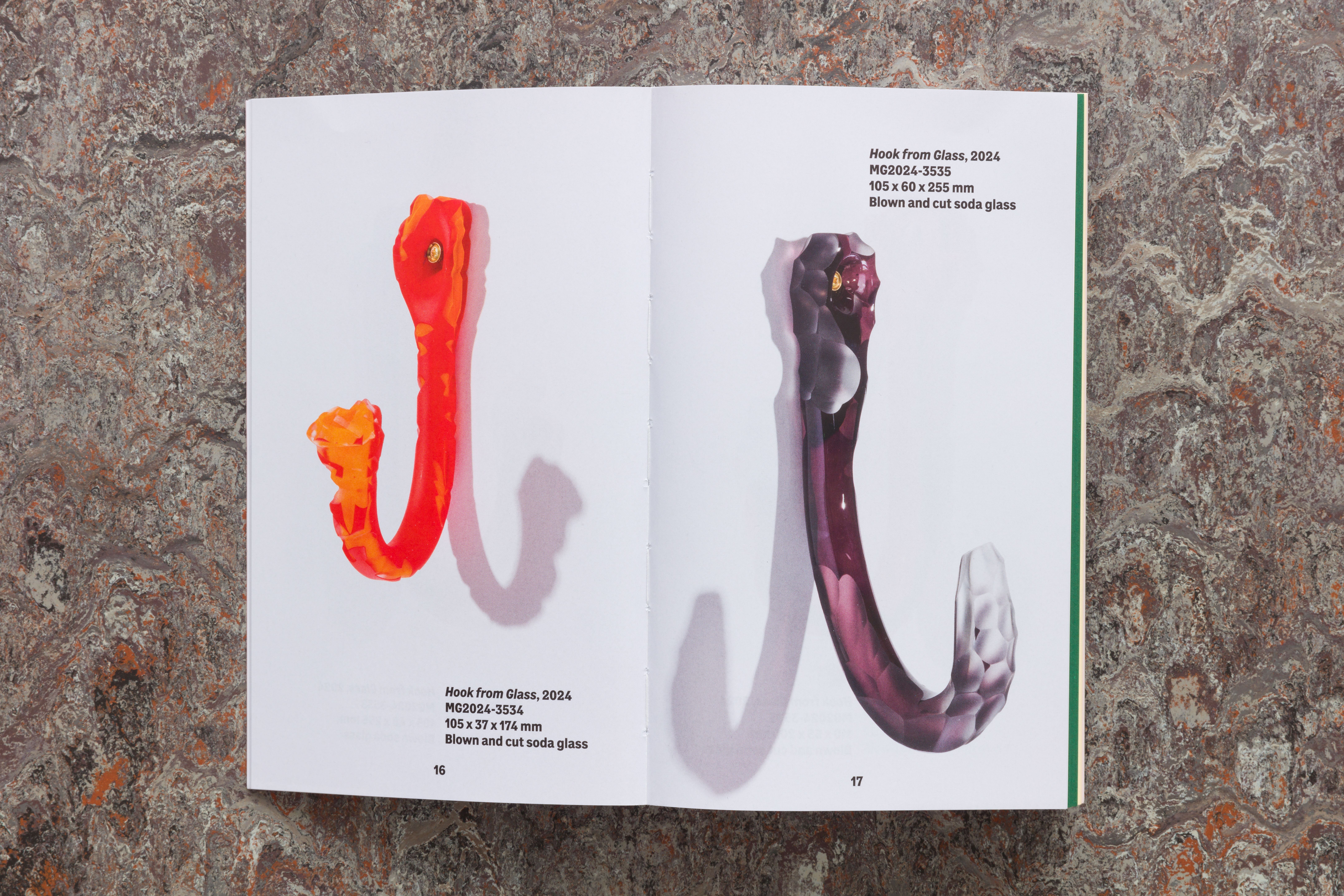
W*: And as for all those hooks – what happens next?
MG: They are on their way back from New York. They will appear in my show in October, and then I’m looking forward to them spreading out to people’s homes around the world. We have quite a few hooks at home. And I will keep making them, too.
Hook Book – Almost 1000, designed by Åbäke, published by Dente-de-Leone, £27 from dentdeleone.com and Waterstones
